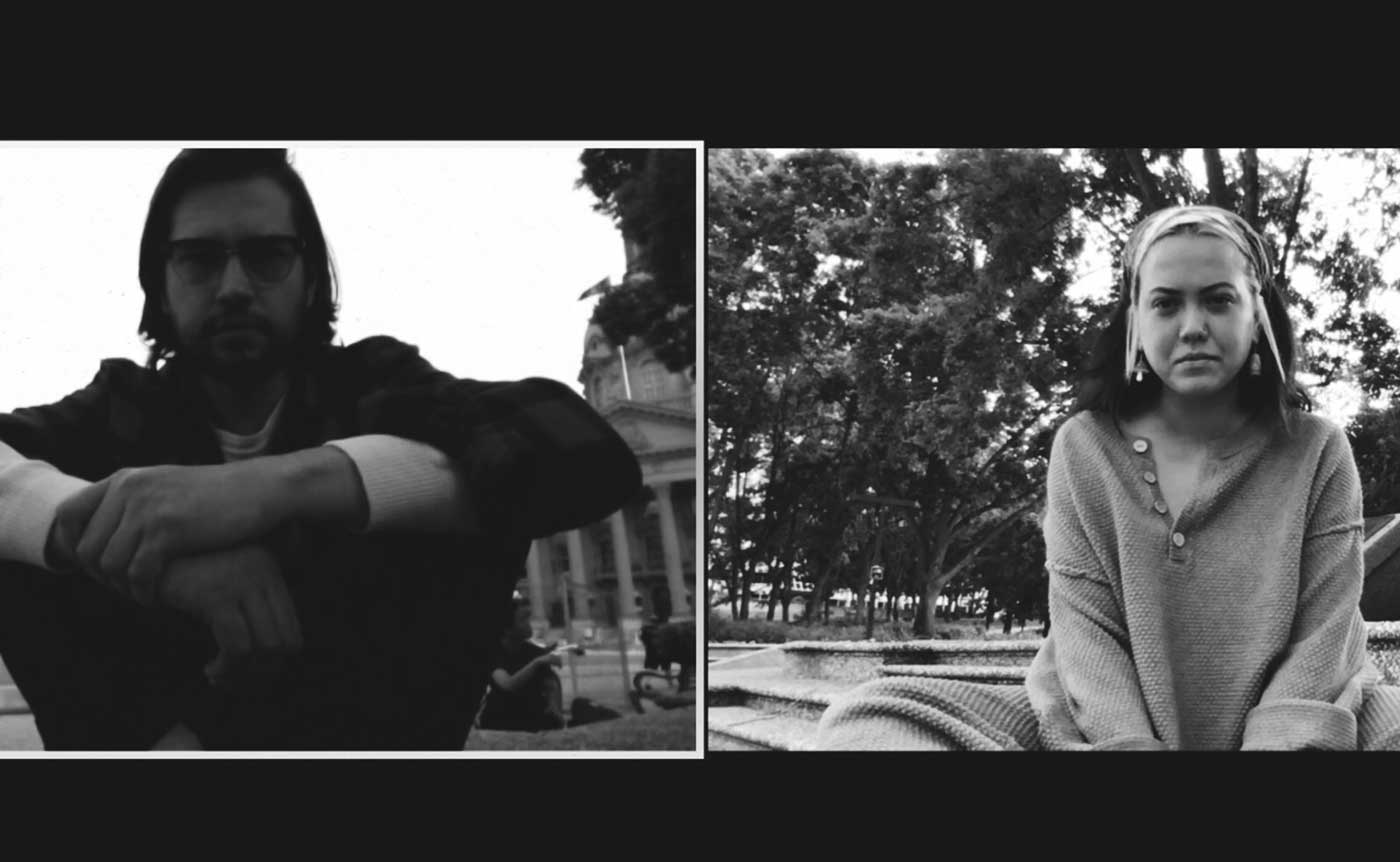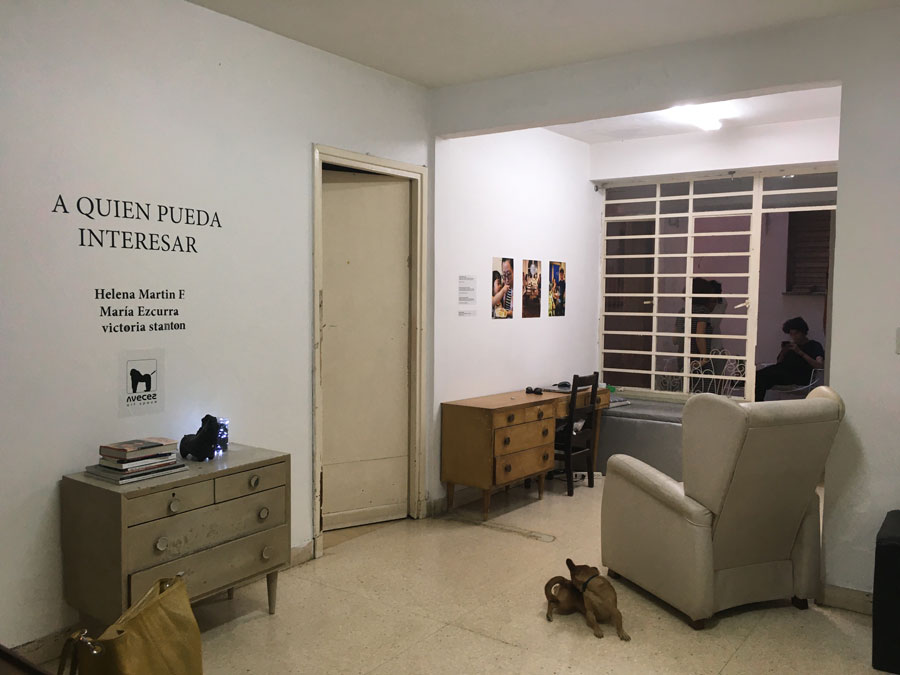C.6 Close to Home: Strategies and Case Studies for Local Research in Art and Architecture, Part 1
Fri Oct 16 / 9:00 – 10:30
voice_chat expiredchair / Jenni Pace, Vancouver Heritage Commission/University of British Columbia
As habits and routines have radically scaled down, many have turned a critical eye toward their immediate environs. Perhaps this has meant pausing to examine a building usually passed in haste, scrutinizing the allocation of pedestrian space, or deeply engaging a public art installation. Amidst the struggle to reimagine academic terms without travel, and stretching to engage students returned to their own towns, let us share strategies for projects close to home. This roundtable invites proposals from artists, researchers, instructors and arts programmers who are rooted in community-based research, or are interested in adding local case studies to outward-facing projects. We will source best practices for identifying close at-hand topics, utilizing small archives, and collecting oral narratives, as well as modelling new media strategies for broader engagement. Case studies that fill a gap in the existing record, or contextualize local variations on broader movements, are strongly encouraged.
C.6.1 Canadian History in 100 Works of Art: Local Histories of Art and Architecture in an Asian Art Class
Randip Bakshi, Langara College
How do you include local history in an Asian art class in Vancouver? Given the large South and East Asian communities that make up the urban fabric of this bustling city, it would seem like an easy task, but it has been somewhat challenging. As a historian of early modern Asian art, I try to connect the history of Vancouver with the history of Asia through a series of encounters. The British foray into Hong Kong and its subsequent colonial architecture or the emergence of oil painting in the colonies are moments of encounter that connect local histories to larger histories of empire. To highlight the commonalities of these encounters — early modern, colonial, and post-colonial — I have embarked on two projects. First, an Instagram account where I ask students to find and post a site of significance within the Greater Vancouver Area and connect it to a historical moment both locally and internationally (of course, given the nature of my courses, these international moments pertain to Asia). Their connections are included as text in the Instagram post. By engaging students in researching local histories, I am able to connect the material they are studying to their lived realities. Similarly, my other project is a YouTube channel tentatively titled, “Canadian History in 100 Works of Art,” where I connect the multiple histories of empire and nation-building through prominent Canadian works of art. It is a project that at its heart tries to understand what makes identity, and as these artworks illustrate local identities are often crucial to building a sense Canadian-ness whether we look at Emily Carr’s Seascape (1933) or Tom Thomson’s The Jack Pine (1917). Both of these projects emerged as a means to connect local and national, empire and colony, and most importantly, immigrant and identity.
Randip Bakshi is an Instructor at the Department of Art History & Religious Studies at Langara College, where he teaches courses on Asian art. His area of research is early modern South Asia, especially Mughal painting and its secondary school in Punjab. His other interests include gender & sexuality, the British Empire, identity, and global art history. He has an undergraduate degree from the University of Toronto and a graduate degree from the University of Victoria. Subsequently, he started his doctoral studies at the University of California, Berkeley before returning to Canada.

Share Your Story, The Reach Gallery Museum, Abbotsford, BC. Image credit: The Reach Gallery Museum.
C.6.2 South Asian in the Valley: The Challenges of Producing a Community-driven Exhibition in a Pandemic
Adrienne Fast, The Reach Gallery and Museum
Drawing on the work of influential museum thinker Nina Simon (The Participatory Museum, The Art of Relevance), The Reach Gallery Museum is currently developing a major co-created exhibition (and associated programs) that will focus on the history, culture, and contemporary character of the local South Asian community. One of the most demographically significant communities in Abbotsford, constituting roughly 30% of the local population, the South Asian community remains underserved by existing arts and culture infrastructure, including The Reach. The current project seeks to redress that status quo by adopting a radically collaborative, anti-hierarchical exhibition development methodology, in partnership with individuals and organizations in the South Asian community. Work began on this project in January 2020, and a series of community engagement events were planned for the spring and summer. These events were an essential component of the intended co-creation process, and would have involved hundreds of participants helping to shape the final exhibition and programs. These plans obviously had to be drastically changed as a result of the COVID-19 pandemic. This paper will present the challenges and unexpected opportunities associated with developing a community-driven exhibition in the context of a pandemic. Curator Adrienne Fast will be joined by interns Gureena Saran and Alysha Mahil, who were hired by The Reach specifically to provide support for the overall project. Together they will share their experiences in collecting oral narratives, scaling down engagement sessions to meet health guidelines, and utilizing social media platforms like Instagram and TikTok to build broader engagement when it remains impossible to come together in person.
Adrienne Fast earned her PhD in art history and theory at the University of British Columbia. Her academic work focuses on art and visual culture production during the late-colonial period in South Asia, particularly in Bengal. She taught South and Southeast Asian art history as an adjunct professor at the University of Western Washington for 5 years before shifting to working in curatorial roles in museums and art galleries. Currently she is the Curator of Art & Visual Culture at The Reach Gallery Museum in Abbotsford, BC, as well as serving as a Research Associate with the South Asian Studies Institute at the University of the Fraser Valley, where she also teaches courses in South Asian art history as a sessional instructor.

Eszter Rosta, mediated presence 01, Zoom, Twitch Livestream, Location: Edmonton, AB, August 2020, (ft. Matthew Lapierre).
C.6.3 Towards a Performative Aesthetics of Mediated Presence
Eszter Rosta, University of Alberta
As a relational and intersubjective form, performance art privileges the aestheticization of an authentic and present body, whereby corporeality, bodily presence, and liveness are deemed fundamental. Intelligibilities of a performative aesthetics of presence continue to depend on the hierarchal disposition of the performative art object; its authentic form is marked in the immediacy of presence and material physicalities of the live body. With impacts of pandemic related restrictions on movement and implementations of physical distancing, critical considerations of new forms of mediated presence are imperative. Though there have been new media artistic movements that primarily focused on fetishisms of network culture, I am specifically interested in what it means when the internet is no longer the object of technological and artistic fantasies. What does it mean when physical presence is controlled and restricted, and mediated presence is the only form of presence allowed?
This essay proposes a phenomenological investigation, calling attention to the limits of what we know about liveness and presence. What exactly is at stake in claims of authentic presence in performance art? Can presence exist in mediated performance and representation? Is our experience of performance devalued if we do not have direct access to the physical presence of performing bodies? Utilizing Auslander’s concept of liveness, Foucault’s dispositif [apparatus], and my own experiences as an emerging performance artist, I will argue that digital performative platforms can offer mediated potentialities of affective presence if we are willing to engage with them as present. The definition of presence must adapt to supervening social restrictions and expand beyond persisting compulsions of presence as located within the live body and event. I suggest that a dispositif of presence is necessary to reconsider the heterogeneous ensemble of performative aesthetics and affordances of emergent material formations, practices, and discourses of mediated presence.
Eszter Rosta is an emerging object and performance artist based in Edmonton, AB (Amiskwacîwâskahikan, Treaty 6 Territory). Using embodied practice and research-creational methodologies, her work explores affective, intersubjective, and mediated spatio-temporal form[lessness]. She has exhibited and performed in Ontario and Alberta and has presented work and papers at the CSPT Graduate Student Conference (University of Victoria), the Québec Universities English Conference (Bishop’s University), and the Feminist Art Conference (OCAD University). She holds a Bachelor of Fine Arts with a Minor in Gender and Women’s Studies and a Bachelor of Education from York University, and is currently an MFA candidate at the University of Alberta.

View of the group exhibition A quién pueda interesar A qui de droit, Avecez Art Space, Havanae. December 2019, Photo credit: Analays Alvarez Hernandez.
C.6.4 Curating Contemporary Art at Home for the World: (Post)-Socialist Domestic Art Galleries
- Analays Alvarez Hernandez, Université de Montréal
- Maria Silina, Université du Québec à Montréal
The 12th Havana Biennial (2015) witnessed the outburst of a particular phenomenon in the midst of the re-launch of diplomatic relations between Cuba and the United States: many local artists, art historians, curators, and cultural workers transformed their homes into exhibition venues. More recently, the second edition of the Havana Art Weekend (December 2019) placed residential infrastructure at the epicenter of this independent cultural initiative.
In search of similar exhibition venues in other countries, we came across the existence of “domestic art galleries” in the Soviet Union/Russia and China (Kvartirnye vystavki, 2005; Zhang Lijuan, 2008; Zhang Min, 2008; Tupitsyn, 2017; Su Wei, 2018). “Domestic art gallery” is an umbrella expression that serves to describe houses and apartments in (post)-socialist countries hosting solo and group shows, artist and curator’s residencies, talks, workshops, etc. that have kept their primary domestic function. Since the 1960s and for decades, domestic art galleries were instrumental to the development of contemporary art in socialist countries such as the Soviet Union, China, and Cuba, and constituted thus legitimate loci for generations of artists. With the dismantling of the Soviet Union and the evolution of Socialism (China and Cuba), they have made a comeback. Today, they are an appealing alternative for emerging artists and cultural activists under the pressure of both modern authoritarian regimes and increasingly globalized capitalist art market. In this paper, we intend to demonstrate that domestic art galleries are nowadays mandatory references for any attempt of understanding contemporary art scenes in Russia, China, and Cuba and to verify to what extent their associated network of artists and curators infiltrate, derail or decenter global art circuits.
Dr. Analays Alvarez Hernandez is an art historian and independent curator. Her research focuses on contemporary art, with an emphasis on public art, global art histories, diasporic communities, Latino Canadian art, Cuban art, and curating. She has notably received a bachelor’s degree in Art History (2005) from the Universidad de La Habana (Cuba), and her doctorate from Université du Québec à Montréal (Canada) in 2015. From 2016 to 2018, Dr. Alvarez Hernandez held a FRQSC postdoctoral fellowship in the Department of History of Art at the University of Toronto. Currently, she is Assistant Professor in the Département d’histoire de l’art et d’études cinématographiques at the Université de Montréal. In collaboration with Maria Silina (UQAM) and Yi Gu (University of Toronto), she leads a SSHRC-funded project about “domestic art galleries” in (post)-socialist societies.
Maria Silina is an Adjunct Professor at the Université du Québec à Montréal at the Department of History of Art. She is the author of History and Ideology: Architectural Sculpture of the 1920-30s in the USSR (2014, in Russian). Her current book project is titled Art History on Display: Soviet Museology Between Two Wars (1920s-1930s). She participates in several research projects, which address communist art and history, including Expériences et usages du passé dans les communautés en ligne : (n)ostalgies de l’ancienne République démocratique allemande in collaboration with Katharina Niemeyer (UQAM), as well as Artistic Research. Between the Stenograph and the Encyclopaedia. Strategies for the Acquisition and Documentation of Knowledge used by the State Academy of Artistic Research in Moscow (1921-1930), DFG (Deutsche Forschungsgemeinschaft) project with PD Nikolaj Plotnikov and Dr. Anke Hennig, Ruhr Universität Bochum.



